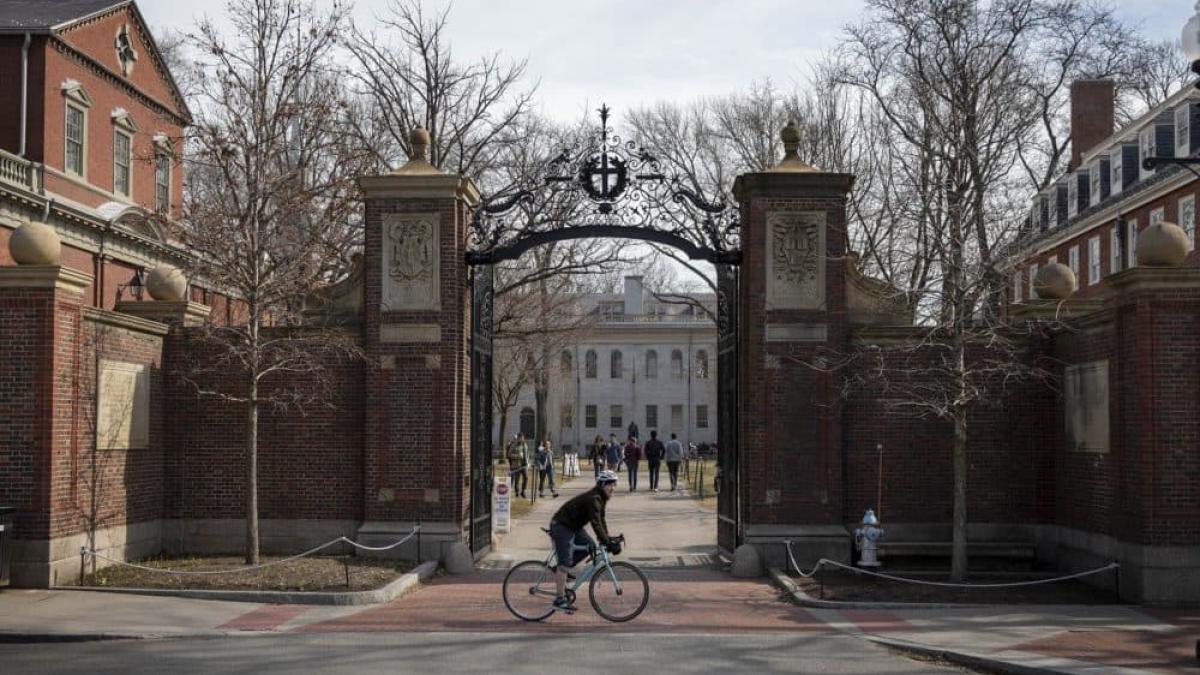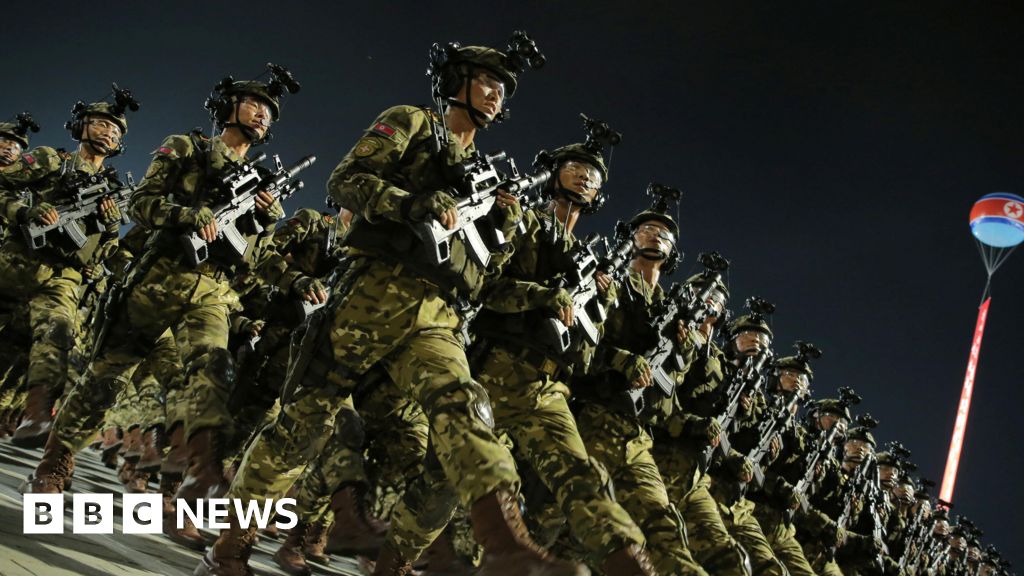- 532 Posts
- 147 Comments

 10·6 days ago
10·6 days agoBorder and immigration: How mass deportations would devastate Texas
Former President and current presidential candidate Donald Trump has promised, if elected, to implement the “largest deportation in the history of our country.” If such an operation were carried out, a second Trump regime could target around 11 million undocumented people in the United States. Trump’s running mate, vice presidential candidate JD Vance, has suggested starting with 1 million deportations a year—a figure that dwarfs the total reached in any year of Trump’s presidency or that of Barack Obama. The proposal has become a rallying cry for Trump’s base, with supporters brandishing matching signs at rallies reading “Mass Deportations Now.”
[…] Immigrants exist across our economic spectrum. They’re everywhere. They’re us. When we talk about eliminating them from our society, it’s like not just talking about cutting off a finger. We’re talking about cutting off entire legs from the thigh down.”

 7·8 days ago
7·8 days agoIt seems so.
From the article in my previous post above (here again):
At a polling station for residents of the breakaway Moldovan region of Transnistria - which is economically, politically and militarily supported by Russia - the BBC stumbled upon evidence of vote-buying.
A BBC producer heard a woman who had just dropped her ballot in the transparent box ask an election monitor where she would get paid.
Outside, we asked directly whether she had been offered cash to vote and she admitted it without qualms. She was angry that a man who had sent her to the polling station was no longer answering her calls. “He tricked me!” she said.
She would not reply when asked who she had voted for.
UPDATE: Latest news say Moldova says ‘Yes’ to pro-EU constitutional changes by tiny margin and despite unprecedented Russian interference.

 10·9 days ago
10·9 days agoStill ‘too close to call’ with 98% of votes counted. And ‘foreign influence’ plays a major role in this democratic referendum, reports say.
Official data put Yes on 50.08% and No on 49.92% on Monday morning, with over 98% of votes counted.
[Maia Sandu, the incumbent pro-EU president who topped the presidential election first round but by 41% of the vote and will now face a second round] accused “criminal groups” of working together with “foreign forces” of using money, lies, and propaganda to sway the vote.
Sandu also said her government had “clear evidence” that 300,000 votes were bought, which she called “a fraud of unprecedented scale”.

 2·9 days ago
2·9 days agoI guess what is meant here is the 2024 presidential election The focus shifts away from the initial “Harris vs Trump” topic to local/state issues.

 6·9 days ago
6·9 days agoIf I say, “Candidate A is a liar [although they are not]”, then this is unlawful and must be punished. Every journalist and media house can be held accountable for what they are publishing, and this is for good reason.
And private actors like Elon Musk or states like China and Russia are not exactly famous defenders of free speech as we know. This seems a bit hypocritical to say the least.

 8·9 days ago
8·9 days agoFor those interested: A report by the Voting Rights Lab (April 2024) has tracked new laws across the U.S. containing election interference provisions that have been enacted in 29 states since 2021. Key takeaways:
- As a new area of election law, election manipulation legislation is constantly changing.
- 79 new U.S. election interference laws will be put to the test for the first time in a presidential election this November.
- Georgia and North Carolina – two of the states likely to determine the results of the presidential election this November – have been at the forefront of new election manipulation laws.

 3·9 days ago
3·9 days agoU.S. cybersecurity chief says election systems have ‘never been more secure’
State and local election officials across the country have made big improvements to strengthen both physical and cyber security at polling and voting locations to preserve election integrity, said Jen Easterly, the director of the U.S. Cybersecurity and Infrastructure Security Agency.
After Russia’s attempts to influence the U.S. presidential election in 2016, CISA was created to work with state and local officials to make sure voting machines aren’t vulnerable to hacks.
[…] Her confidence in election integrity comes as intelligence officials warn that foreign adversaries — mainly Russia, Iran and China — are stepping up efforts to undermine voter trust in the democratic process, sway voters and inflame partisan divisions.

 4·9 days ago
4·9 days agoIt’s a safe bet that South Africa has nothing to do with it I would say.

 8·17 days ago
8·17 days agoThe article links to several reports about that.

 1·18 days ago
1·18 days agoYou’re right. One banner read:
“We want food not Covid testing; we want freedom not lockdowns; we want dignity not lies. We want reform not the Cultural Revolution; we want to vote not a leader; we are citizens not slaves.”
And another read:
“Go on strike, depose the traitorous dictator Xi Jinping.” The police immediately took him away and he has not been seen since.
You could write such banners in the U.S. and any Western democracy, and nothing would happen. In China, you disapear.

 1·18 days ago
1·18 days agoPeng Lifa didn’t call for insurrection, he held a white paper.

 1·18 days ago
1·18 days agoSure, and the central government has no influence on the media. No censorship, right?

 1·18 days ago
1·18 days agoAn ‘indie newspaper’ in China. Yah, that makes sense. (/s, just to be safe)

 4·18 days ago
4·18 days agoI don’t know what you want to say or what it has to do with the linked report, but there is a lot of propaganda on Chinese state-controlled media (e.g., [reports on a ‘civil war in Texas’](Misinformation spreads in China on ‘civil war’ in Texas), things like that).
What ‘these people’ report is on a person who forcibly disappeared after a peaceful protest, for holding a white paper. Every human being with a sane mind must condemn that.

 5·23 days ago
5·23 days agoAnd jolly old Elon has also something to say about it …
Pete Buttigieg confronts Elon Musk’s falsehoods about government’s Hurricane Helene relief: ‘Give me a call’ — (archived)
U.S. Transportation Secretary Pete Buttigieg publicly confronted Elon Musk on Friday, refuting false claims the tech billionaire made about the federal government’s response to Hurricane Helene. Musk, who has over 200 million followers on his platform, X (formerly Twitter), accused federal agencies, including the Federal Aviation Administration and the Federal Emergency Management Agency, of blocking aid deliveries and obstructing private relief flights to storm-hit areas in North Carolina.
Musk shared a screenshot of a text exchange purportedly with a SpaceX engineer claiming the FAA was “throttling” airspace, preventing helicopters from delivering Starlink internet terminals. Musk labeled the government’s actions as “belligerent government incompetence,” triggering a wave of misinformation on social media.
[…] Buttigieg responded directly to Musk on X, debunking the claims. “No one is shutting down the airspace and FAA doesn’t block legitimate rescue and recovery flights,” Buttigieg tweeted. “If you’re encountering a problem, give me a call.”
[Edit typo.]

 1·24 days ago
1·24 days agoHurricane Helene: Rumor Response
Help keep yourself, your family and your community safe after Hurricane Helene by being aware of rumors and scams and sharing official information from trusted sources.

 16·24 days ago
16·24 days agoQuick reminder on Hurricane Matthew which passed North Carolina in 2017, when Trump was U.S. President:
North Carolina denied 99 percent of federal recovery funds for Hurricane Matthew (May 2017)
North Carolina Gov. Roy Cooper said Wednesday the federal government authorized just $6.1 million of the more than $900 million [less than 1 percent] the state had requested. Cooper said the funds were meant for housing and business repairs, housing elevation, agriculture, public facilities repairs, and health and mental services.
In a letter addressed to President Trump, Secretary of Housing and Urban Development Ben Carson and congressional leaders, Cooper called on the federal government to support Hurricane Matthew recovery efforts […]
“Families across eastern North Carolina need help to rebuild and recover, and it is an incredible failure by the Trump Administration and Congressional leaders to turn their backs,” Cooper said in a statement.

 4·30 days ago
4·30 days agoThese people are heroes if something like that exists. China must not only be called out more on that, Beijings ignorance of universal human rights must also have direct real-world consequences. Trade and investment agreements (such as WTO rules and China’s infamous Belt and Road Initiative) make only sense if and when rights issues are part of these international rule sets. China’s policies are manifestly unjust as its government permanently makes decisions in complete disregard of anyone else - its own people, its Asian neighbours, and the wider global community. There appears to be a slight, timid change in this respect, but much more must be done to adequately address the crimes against humanity committed by China.

 8·1 month ago
8·1 month agoHurricane Helene continues to unleash its fury across the Southeast after leaving 49 people dead in multiple states, leveling communities and stranding many in floodwaters after the historic storm made landfall in Florida’s Big Bend region Thursday night as a monstrous Category 4 hurricane with roaring 140 mph winds.










That’s very telling and a stark reminder why decentralization in media and the entire economy is important.
Washington Post editor-at-large Robert Kagan stepped down in the meantime. As Semafor reports on the newspaper’s recent editorial meeting:
Addition:
Bob Woodward, Carl Bernstein Blast Washington Post’s ‘Surprising’ Decision Not To Endorse